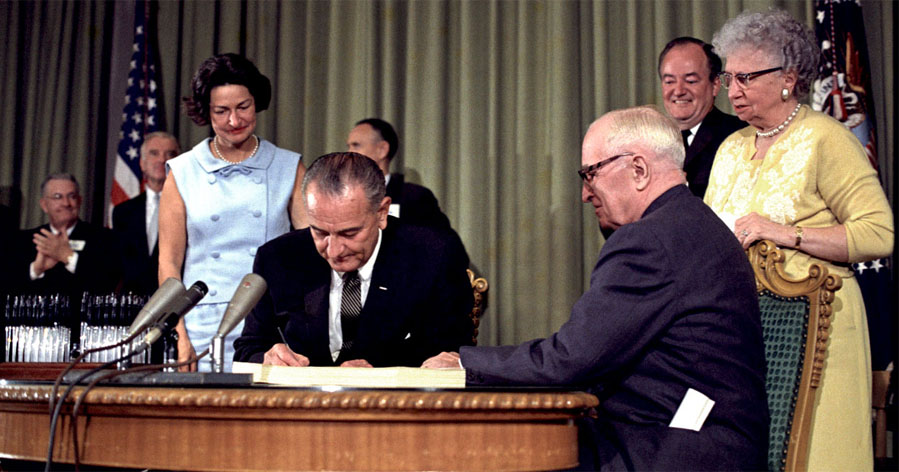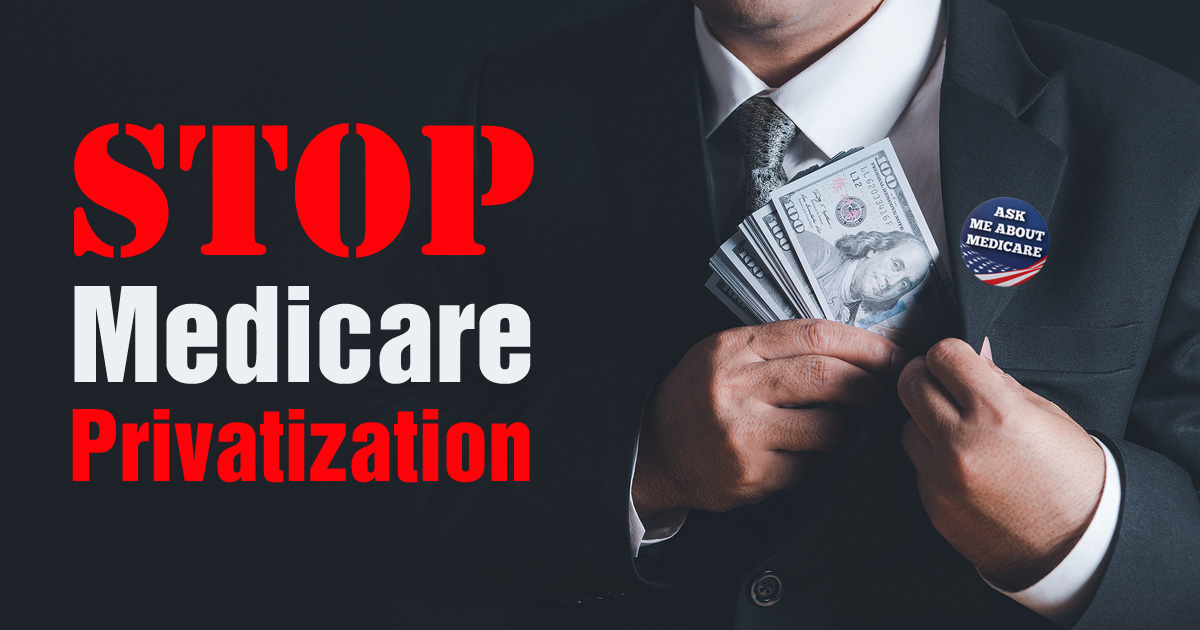OPINION
Traditional Medicare: The promise is in peril
By LISA DEKKER
(April 5, 2023) — At its beginning, Traditional Medicare was a promise made to the American people that when they turned 65 they would get health care when they most needed it. With almost 60 million enrollees, and administered by the Centers for Medicare and Medicaid Services (CMS), it is financed through our payroll taxes, general tax revenue, and the premiums paid. Medicare is widely regarded as an essential public good, and one of this country’s best government programs.
Fifty-seven years ago, only 60 percent of Americans over age 65 had health insurance. Coverage was often unavailable or unaffordable. As a result, as thousands suffered the onset of health conditions often brought on by aging, many had their finances and their very survival severely threatened by medical expenses.
In 1965, under the leadership of Lyndon Johnson, and after months of strenuous negotiations, Congress passed the Medicare Act under Title XVIII of the Social Security Act. It was a hard-fought victory, with powerful forces aligned against it, most notably the American Medical Association, which launched an all-out lobbying campaign, including anti-Medicare recordings by an actor named Ronald Reagan.

President Lyndon Johnson signs the Medicare program into law on July 30, 1965. At right, former President Harry Truman and his wife, Bess, became the first two Americans to be issued health insurance cards under the program.
The Medicare Act was one of the most important achievements for civil rights in American history. It quietly and quickly integrated both hospitals and physicians’ practices by making Medicare payments to providers conditional on desegregation. After decades of a strictly segregated system, hospitals in both the North and South quickly integrated – at least a thousand in less than four months.
Traditional Medicare covered Part A (hospitalization) and 80 percent of Part B (including doctor visits, exams, and specialists). In 1973, Medicare was expanded to cover people under age 65 who receive Social Security Disability Insurance (SSDI) benefits. But in 1997, Medicare’s door was opened to private insurance companies via HMO’s. And 2003 marked the beginning of Medicare Advantage plans – private insurance masquerading as Medicare. It is crucial to recognize that what is broadly labeled “Medicare” today encompasses both traditional Medicare and what is actually private health insurance, hiding under the name Medicare Advantage.
The fact that Medicare Part B leaves it up to the beneficiary to pay 20 percent of costs is likely due to the “moral hazard” myth that pervades much of health insurance – that people will over-use their health care if everything is covered. In 1980, the Baucus Amendment implemented Medigap supplements. A traditional Medicare enrollee had to choose whether to purchase a Medigap supplemental plan as a “solution” to that 20 percent gap. Purchasing or not purchasing Medigap insurance can lead to traditional Medicare being more expensive on an annual basis than Medicare Advantage. The 20 percent gap is a historical shortcoming of the program. This has become a huge problem for seniors, along with the fact that prescription drugs were originally not covered, and then CMS was prohibited from negotiating for lower prescription drug prices.
 Despite these shortcomings, Traditional Medicare has many benefits, including the following:
Despite these shortcomings, Traditional Medicare has many benefits, including the following:
• Patients can go to any doctor or provider that accepts Medicare, in any state.
• There are no restrictive networks, and no prior authorizations are needed.
• If you choose Traditional Medicare when you first enroll at age 65, you have a guaranteed right to buy a Medigap plan to cover expenses not covered by Part B. (Note that current rules say that if you want to add a Medigap plan later, you may be denied.)
• If you choose Traditional Medicare and a Medigap plan during your initial enrollment window, there are no health questionnaires. Many Traditional Medicare enrollees choose to purchase a Medigap plan.
• Those on traditional Medicare experience fewer delays or denials of care than those on Medicare Advantage.
• The administrative costs of traditional Medicare are only 2-3 percent vs. 12-18 percent for Medicare Advantage (private health insurance.)

Traditional Medicare has been one our country’s most treasured public goods, providing universal health care for those 65 years of age and older, as well as those who are disabled. Despite some built-in flaws, traditional Medicare maximizes patient choice, access, and quality of care. But as private, for-profit entities have relentlessly and successfully lobbied for a bigger piece of the what will soon be the $1.6 trillion Medicare pie – through both Medicare Advantage and a new pilot program called ACO REACH – massive profiteering and corruption now threaten the quality of care and the stability of the Medicare Trust Fund. This once again puts many seniors and, because of health equity issues, communities of color in peril.
The privatization of Medicare has inevitably led to the maximization of profits, often through fraudulent practices, and has placed the entire Medicare program in jeopardy. We need to take the profit incentive and privatization out of Medicare and replace it with an expanded public, non-profit traditional Medicare system with expanded benefits and lower individual costs.
 Lisa Dekker is Co-Outreach VP for the Puget Sound Advocates for Retirement Action (PSARA). She resides in Clallam County and is one of PSARA’s lead organizers on the Clallam County PSARA Committee. This column originally appeared in PSARA’s Retiree Advocate newsletter and is posted here with the author’s permission.
Lisa Dekker is Co-Outreach VP for the Puget Sound Advocates for Retirement Action (PSARA). She resides in Clallam County and is one of PSARA’s lead organizers on the Clallam County PSARA Committee. This column originally appeared in PSARA’s Retiree Advocate newsletter and is posted here with the author’s permission.
ALSO SEE:
The Stand (Feb. 23) — PSARA aims to stop Medicare privatization (by Jeff Johnson)





